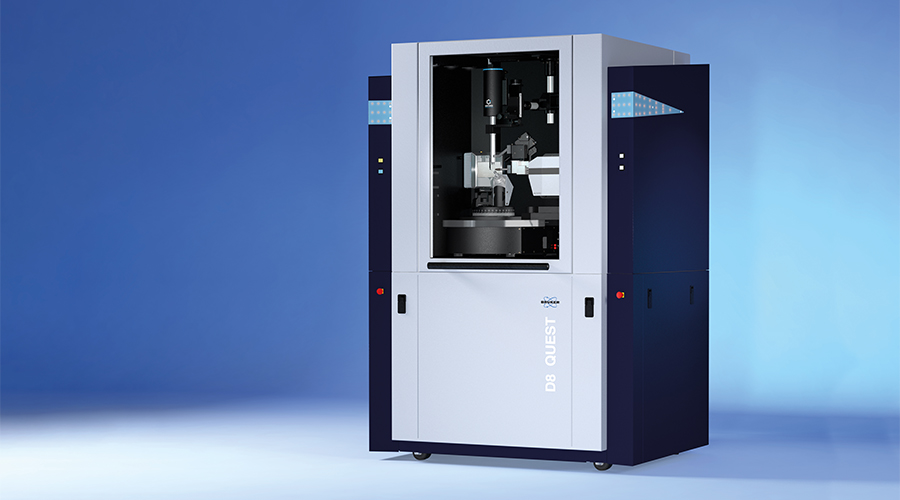Organometallic Chemistry
Organometallic chemistry is a cornerstone of catalyst research
Although nowadays the term is usually used more broadly and includes other elements as well the presence of a metal carbon bond is usually essential in organometallic chemistry. However, this statement does not even start to reveal the sheer complexity and high interdisciplinarity required in this important field of chemistry.
Organometallics play a key role in modern chemistry. Many chemical processes would not exist without the use of organometallic catalysts. These are typically categorized into homogeneous and heterogeneous catalysts depending whether they are in the same phase or in a different phase as the reactants.
Our wide range of instruments is perfectly suited to deepen the understanding of the nature of organometallic compounds as well as investigating the mechanisms behind their interaction with agents providing access to highly complex structures and efficient reactions which are not accessible by any other method.
SC-XRD in organometallic chemistry
Organometallic Chemists greatly appreciate the wealth of information that can be obtained from single crystal X-ray structure determination (SC-XRD) of their compounds. SC-XRD provides detailed qualitative and quantitative information on the elements in the sample and their 3-dimensional intra- and intermolecular arrangement.
Structure determination on air-stable binary Ni(0)-olefin complex.
A 60-year quest has been answered with the synthesis of Ni(Fstb)3 (stb= stilbene). This the component is represents a general, practical, and air-stable Ni(0) precursor. The single crystal structure nicely shows the unique arrangement of simple ligands that shield the nickel center from oxygen.
FT-IR spectroscopy in organometallics analysis
Infrared spectroscopy is broadly used in organometallic chemistry. It provides information about the identity of materials and helps to closely monitor ligand-metal interaction (CO, NO), functional groups and their behaviour in metal-organic frameworks (MOFs). But there are even more applications.
Elucidating chiral molecules by VCD
Vibrational Chircular Dichroism - VCD for short can identify enantiomers of metal complexes and even deliver the absolut structure of chiral molecules. VCD technique makes use of the fact, that one enantiomer absorbs preferred left-circular polarized light and the other enantiomer rather the right-circular polarized light. In VCD experiment the difference in the absorption of left- and right circular polariezd light is detected.
And this difference spectrum is the chracteristic VCD spectrum for an enantiomer. Now it is not difficult to understand, why the VCD spectra of two pure enantiomers are mirrored at the zero line. That means, where enantiomer A has a positive VCD band, the enantiomer B should theoretically show a negative VCD band at exactly the same poisiton and with the same intenstiy.
Excitation studies of metal complexes in solid state
Transmission FT-IR provides detailed insights into the distribution of charges in excited state systems of metal complexes. It helps assess the kinetics of their decay by measuring the differences in ground- and excited-state vibrational frequencies for IR chromophores and by recording the temporal evolution of those transient spectral features. On the right, the time-resolved decay of the excited state is shown. Using Bruker research spectrometers featuring Step-Scan option, nano-second time resolution is accessible.
Monoexponential (A) and biexponential (B) fits to the integrated intensity of the excited-state ester CO band of 1 as a function of time.
NMR in Organometallic Chemistry
Organometallic compounds frequently lend themselves to study by NMR spectroscopy. The capability of NMR to directly study many elements present in such compounds allows the researcher to get a direct look at the key reactive sites of a catalyst. Liquid state NMR is commonly used for homogeneous catalysts.
Elucidating Structures
Not only can the structure of the catalyst itself be investigated but it also allows the study of catalyst/reactant complexes. Even intermediate active species can be characterized by NMR spectroscopy. Hetergeneous catalysts are the primary target of solid state NMR. The significant gain in sensitivity of dynamic nuclear polarization (DNP) NMR has been used to enhance the signals from spars populations of catalytically active species on the surface of support systems.



